NorthEast Radio Watch 3/10/2025: Audacy Cuts Deeper
In this week’s issue… Audacy cuts hit nationwide - Townsquare takes more signals silent - Buffalo's Lillis signs off - Mass Broadcasters name new HOF inductees - PA anchor sues Nexstar
Text and photos by SCOTT FYBUSH
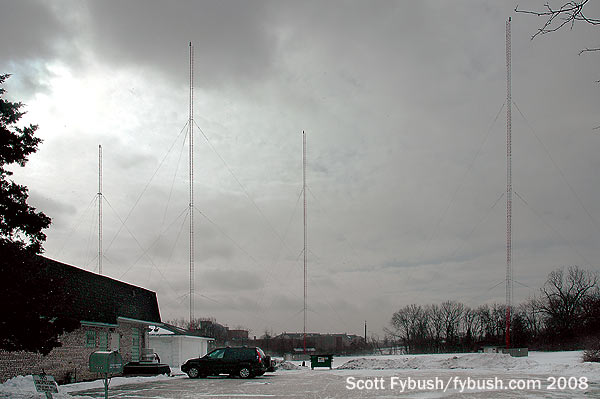 When I sit down each spring to begin plotting out the next year’s Tower Site Calendar, there are a lot of considerations that play into the choices of what photos will grace your wall for the next twelve months.
When I sit down each spring to begin plotting out the next year’s Tower Site Calendar, there are a lot of considerations that play into the choices of what photos will grace your wall for the next twelve months.
I’m often asked how I decide which sites make the cut, and the answer is that there are a few things I think about. I like to have a nice geographic balance every year – not just those always-picturesque Western mountaintops, but also sites from all over the country and sometimes beyond. I like sites that have some history to them, so I can write something interesting about them in the calendar text and here on Site of the Week, especially if I can feature them on an important anniversary. I’m always looking for a nice balance between AM and FM/TV sites.
And one more thing: I like to keep a seasonal balance, so that you’re not opening your calendar in March and seeing a summer scene. That creates a problem at times, since so much of my travel takes place in the summer months, and it’s no fun driving on icy, snowy roads to take pictures of tower sites in the winter.
Sometimes, though, everything comes together just right, and so it did in the suburbs of Chicago in 2008, when we shot this only-in-February view of what’s now the daytime site of WYLL (1160), a station with quite a history behind it.
This 50,000-watt facility is the descendant of the station known for most of its history as WJJD. It’s one of Chicagoland’s oldest radio stations, with a history that goes back to 1924 and the Loyal Order of Moose, which built its own community called Mooseheart, not far from Aurora. The WJJD calls came from the order’s leader, John J. Davis, and the station named for Davis took up residence in a distinguished-looking building at Mooseheart. After moving rapidly around the dial in its first seven years, WJJD landed on 1130 in 1931, operating as a daytimer until sunset at the primary station on the channel, KSL in Salt Lake City.
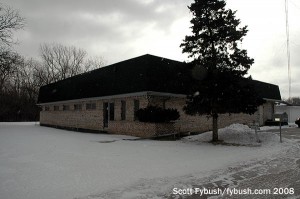 |
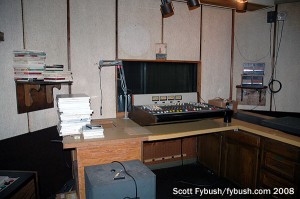 |
The link between WJJD and the Moose organization broke amidst the financial pressures of the Depression. In 1935, WJJD was sold to Ralph Atlass, becoming a sister to his WIND (560) and moving its transmitter to a site on Ballard Road in Des Plaines that had been used by WIND’s former share-time partner, WIBO. (You can read more about the early history of WJJD at the Chicago Radio History pages, which is also where we’ve sourced much of this information.)
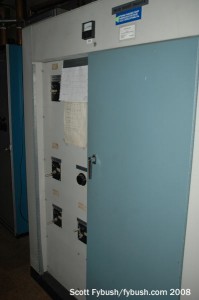
The 20,000-watt station moved up to 50,000-watts after its 1941 shift up the dial to 1160, where it was still limited by sunset in Salt Lake City at KSL. The end of radio duopoly in 1943 sent WJJD into the hands of department store heir Marshall Field III, who made the station part of a media group that included the papers that would become the Sun-Times. After a decade as a radio owner, Field sold WJJD in 1953 to Plough Pharmaceuticals, which had become a major radio presence with stations such as WPLO in Atlanta and WCOP in Boston.
Plough began rolling out a top-40 format at WJJD in 1957, and by 1960 the station was top-40 for its entire broadcast day, which was augmented by the addition of 24-hour WJJD-FM (104.3) in 1961. Two years later, format competition from WLS and WCFL sent WJJD to a full-time country and western format. In 1964, WJJD moved its AM transmitter less than a mile westward down Ballard Road to the current site featured here, bringing along its RCA Ampliphase BTA-50G for the ride.
The country format lasted on AM until 1980, while WJJD-FM became WJEZ and kept country spinning for another decade or so afterward before going oldies (and then “Jack,” and then classic hits) as WJMK.
On the AM side, WJJD finally secured a full-time license in the late 1970s, adding two more towers to its existing two at the Des Plaines site to run 5000 watts at night with coverage of at least the central part of the Chicago market, if not the fast-growing western suburbs. WJJD spent the 1980s and the first half of the 1990s with “Music of Your Life,” eventually ending up in the hands of Infinity as a talker and then becoming part of the big CBS Radio cluster. CBS’ all-sports station, WSCR, was outperforming its daytime-only home at 820 on the dial (the old WAIT), and in 1997 WSCR went full-time on 1160. That era of WSCR’s history lasted just three years, until CBS shut down the former Westinghouse all-news WMAQ on 670 in 2000 and moved WSCR’s sports to that booming full-time 50,000 watt signal. After a short stint simulcasting CBS AAA WXRT-FM (93.1) under the WXRT(AM) calls, 1160 went to Salem in 2001, taking the WYLL calls and Christian talk format that Salem had been running on the Des Plaines-licensed 106.7.
Salem flipped 106.7 to Christian contemporary as WZFS, “The Fish,” and for a few years the stations operated together from studios here in the Ballard Road building. In 2004, Salem swapped 106.7 to Univision Radio for WIND (560), reuniting 560 and 1160 under common ownership for the first time in more than 60 years. The studios ended up in Elk Grove Village, and when we visited in 2008, this building was back to being just a transmitter facility.
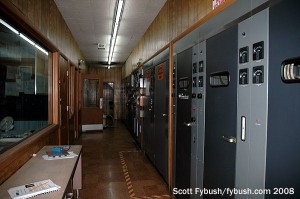 |
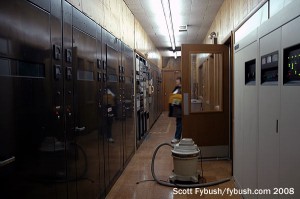 |
In fact, it was not only “just a transmitter facility,” it was “just a daytime transmitter facility.” As one of the last companies still committed to investing in AM, Salem bet big on improving WYLL’s nighttime signal. In 2007, Salem signed on a new night site for 1160, beaming 50 kilowatts tightly into Chicago from six towers near Joliet, way out at the southwestern corner of the metro area.
What remained, then, on our tour in early 2008 was a few mostly-empty studio and office rooms, leading down the hall to the transmitter room that runs the length of the rear of the building. The active transmitter then (and now) was a Harris DX50 across the narrow room from the older lineup of transmitters: the Ampliphase that came over in 1964, the new phasor from the nighttime upgrade in the 1970s, and an RCA BTA-10 for backup use.
It’s a good thing I got there when I did: in the last year or two, WYLL removed the Ampliphase, and I’m told there’s now a big hole in the wall where it used to be located.
Thanks to former Salem engineer Paul Easter for the tour, and to current Salem engineer Frank McCoy for the updates!
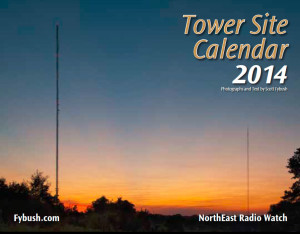 That lovely wintry picture of the WJJD/WYLL site at the top of the page is one of the featured images in Tower Site Calendar 2014, now shipping from the Fybush.com Store.
That lovely wintry picture of the WJJD/WYLL site at the top of the page is one of the featured images in Tower Site Calendar 2014, now shipping from the Fybush.com Store.
This year’s gorgeous electronic pinups includes not only the iconic towers of Catalina Island but also a combiner system in St. Louis, the twin towers of KNRS in Salt Lake City, a historic rooftop site in Jamestown, New York and many more!
If you want a tower calendar on your wall NOW, you can pick up the current edition for just $5 with your 2014 order!
Click here to order your new calendar!
Then check out our store page for our other great merchandise, including the last-ever FM Atlas, the new NRC AM Log and a model of the KSAN tower.
Coming Friday: Boston FMs, 2011
In this week’s issue… Audacy cuts hit nationwide - Townsquare takes more signals silent - Buffalo's Lillis signs off - Mass Broadcasters name new HOF inductees - PA anchor sues Nexstar
In this week’s issue… Rochester newsman retires - Mass. AMs on the move - PA FM sold - Corus goes all-Canadian - NAB honors Shulins
In this week’s issue… Remembering Gary Stevens, Pens' Lange - Public stations team up - NEPM cuts again - More cuts at Corus
In this week’s issue… Townsquare moves studios, cuts staff - Wake up with Mistress Carrie - No flip for WADO - Remembering Maine's Colby, Binghamton's Sommers - Suburban Toronto FM could go silent